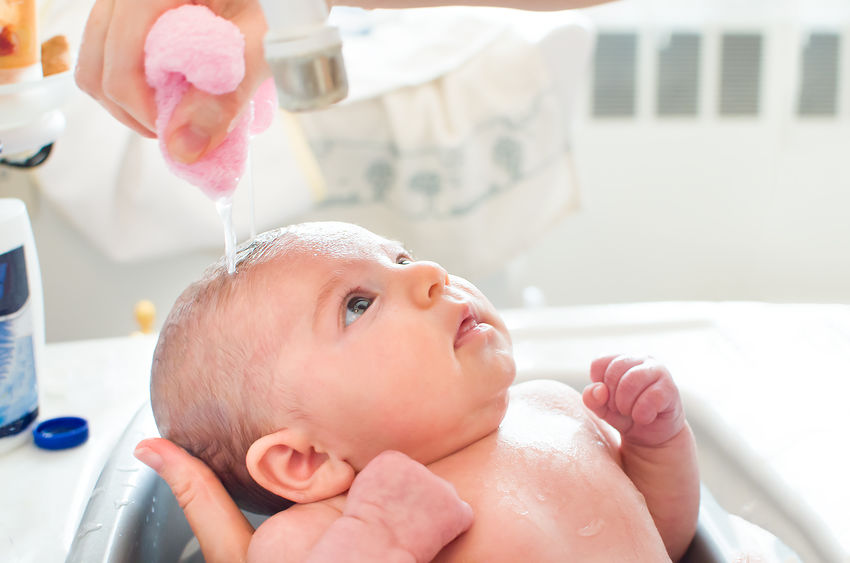What is torticollis in babies and why does it happen?
/
Torticollis means twisted neck in Latin or better known as wryneck, which can happen in both adults and children. Congenital muscular torticollis (CMT) can occur in babies due to poor head positioning habits, both prenatal and postnatal. Children and adults may have experienced torticollis if they might have slept wrong or there was some trauma to the neck area. Types of trauma include whiplash from a car accident or simply twisting the neck too fast to get a better sleep position.

However, torticollis in babies is more intense as it takes stretching and strengthening the sternocleidomastoid muscle in the baby’s neck to cure it. The physical therapist needs to teach the infant how to use those neck muscles and get them back to optimal head positioning with no tilt. Depending on how your baby responds to torticollis physical therapy, will determine how long the therapy will take. Some babies are comfortable in a physical therapy gym setting and can get used to therapists rather quickly, while for others it might take a bit more time to get familiar with the settings.
Why does torticollis happen in newborns?
Newborn babies with torticollis are born with the head tilted to one side. Sometimes it might be right sided torticollis while other times it may be left sided torticollis. It all depends on how the baby was positioned in the mother’s womb during the pregnancy. Abnormal positioning in the womb can cause the baby’s neck to get slightly tilted which often results in the torticollis appearing after birth. There are other theories which claim that congenital muscular torticollis is the result of poor circulation to one of the sternocleidomastoid muscles during labor and delivery. As a result, the SCM muscle tightens up which often leads to the neck tilting to one side.
How soon should infant torticollis be treated?
When a pediatrician diagnoses your newborn with torticollis, treatment should begin right away as it should not lead to permanent neck or head deformities. Torticollis physical therapy treatment can include, regular physical therapy which gets the baby to move their neck from side to side, the torticollis football hold, Tummy Time and various neck massage techniques to loosen the tight SCM muscle. While the baby is flat on their back, the physical therapist will need to be very patient to get the baby to look to their non- preferred side. Often, the PT will station a toy which makes noise on that side to get them to look in that direction. While this is done, the infant’s shoulders are held in place and at the right moment the tight neck muscles will receive a much-needed stretch.
What happens if I choose not to treat my baby’s torticollis?
As a result of not treating your baby, a torticollis facial asymmetry may occur. Children which have had torticollis and were not treated often will have distortion of their facial features. This is because the ear begins to align more forward on one side than the other side. Other facial asymmetries may include misalignment with the eyes, both severe and mild. No one is saying that this for sure will happen, but why risk having a neck tilt remain permanent? Besides for the way your baby’s facial features will appear, other complications can come along with improper head/neck alignment such as breastfeeding difficulties, and flat head baby syndrome. Both come from the poor positioning habits of the baby.
Are there any long-term effects that torticollis can have on my child?
Recent case studies have shown that babies with congenital muscular torticollis have incurred delayed motor development, poor balance, visual distortions, temporomandibular joint dysfunction (TMJ), auditory issues, and speech disorders. This can be very detrimental to the years where your baby begins to develop and especially when they enter pre-kindergarten. Not having the proper motor skills upon entering school, can put them behind the eight ball and can often result in having to remove them occasionally from the class setting until they are up to par with the other children in their class. There are in house therapies which can be done, but parents must be disciplined to make sure the torticollis baby exercises are done. One of the advantages of having an appointment with a physical therapist for acute torticollis treatment, is that we know for certain that the baby will have a set time for therapy. On the contrary, relying on a parent, the exercise often gets neglected due to the busy lifestyle which we live in.

Will my insurance cover infant torticollis treatment?
Most physicians and other healthcare providers will classify this type of treatment as ICD 10 code for torticollis. It determines that infant torticollis is the diagnosis and treatment shall be covered by most major insurance. Some plans might make you pay out of pocket and then reimburse you at a later point in time. Always call your insurance provider to understand the process of how to be fully covered and minimize your out of pocket expenses. Insurance may require for a primary care physician to submit a referral prior to your baby receiving physical therapy for torticollis. Regardless of how often you visit the therapist, parents must be diligent about continuing torticollis exercises at home.
Torticollis as a result of infection in newborns
Besides, for the more common type of torticollis, which can be caused by awkward positioning in the womb, or during delivery, wry neck syndrome can also be caused by infection to the sternocleidomastoid muscle. The infection creates a weakness in the muscle, tightens it, which results in the baby tilting the neck to one side. Like the way any muscle is compromised, there will be limited usage in that area. Once the infection is addressed, the baby will require therapy to strengthen the SCM muscle. This will include the regular torticollis physical therapies along with at home exercises.
Does torticollis hurt my baby?
I know it’s uncomfortable for a new mom or dad to see their newborn baby with a twisted neck, but in truth it does not hurt them at all. Being so small and so new to the scene, there is little to no expectation of what’s called normal. This means that the baby sees and feels nothing wrong with their head tilted in the wrong direction. Depending on the degree of the tilt, mild forms of torticollis can often be treated at home with better positioning habits, neck massages, and lots of Tummy Time.
To treat torticollis or not to treat, that is the question?
The truth is, that before making your own decision, go to your local pediatrician and have them look at the neck tilt. The doctor might tell you that it does not require treatment or he or she might recommend a physical therapist to begin torticollis baby exercises. If you are directed not to treat and you still are not seeing any improvement, you can request a free screening appointment at a local torticollis specialist. Most pediatric orthopedist will be able to diagnose and treat the torticollis. Don’t let the time pass without being seen by a professional, as the earlier you treat the better the outcome. Once the baby is three months or older, the therapy can take longer as the muscle is more set in that position. The key is to catch the condition sooner than later to limit the therapy period. Keep in mind that you want to go to a therapist that’s well experienced in infant torticollis.
Final Words
It’s challenging to see your newborn baby with a slight neck tilt. You might be a little uncomfortable at social gatherings with your baby and it might even take away a bit of excitement of your baby’s birth. Torticollis is a common condition and it’s found in one out of every six babies. It can often be treated at home and the earlier it’s addressed the shorter the therapy period. Never let it get you down as it can be easily fixed through physical therapy. Watch what the therapist does with your baby and try to repeat those exercise at home.

When giving your baby a bath, try to open the enclosed skin crease caused by torticollis and clean the area well. It’s very common to see irritation in that area as there is limited to no air exposure. Once clean, you can dry with a soft dry wipe or cloth to make sure no moisture gets trapped which can lead to infection. If something does not look right, make an appointment with your local pediatrician, not the physical therapist. PT’s are for therapy and doctors are the ones who treat rashes or infections. Bath time is also a great time to get in those neck exercises. Babies who like the water will be more motivated to turn their head to the opposite side, stretching the stiff neck muscles. Regardless, if your baby likes the bath or not, it’s important to find the time and place where the infant torticollis stretches can be done. Always remember that you and your baby should always keep your heads up high.

Cranial Therapy Centers is the only early interventions cranial center in the United States which provides both helmet and manual therapy treatment. We are American Board for Certification in Orthotics, Prosthetics and Pedorthics Facility. Visit us in Lakewood NJ, at 1352 River Ave Unit 14, Lakewood NJ, 08701 or in Teaneck NJ at 1086 Teaneck Road Suite 3F, Teaneck, NJ 07666. You can also email us info@cranialtherapycenters.com
